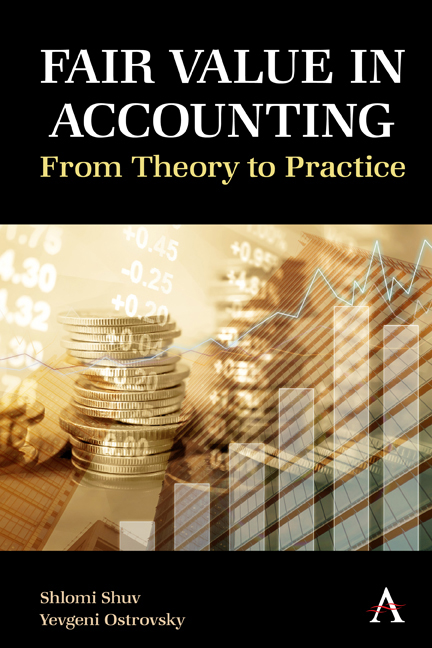Book contents
- Frontmatter
- Contents
- Preface
- Chapter 1 Background
- Chapter 2 Definition and Scope of Fair Value
- Chapter 3 Identifying the Asset or Liability to Be Measured
- Chapter 4 Determining the Market in Which the Transaction Will Take Place
- Chapter 5 Identifying Market Participants
- Chapter 6 Defining the Transaction Price
- Chapter 7 Definition of an Orderly Transaction
- Chapter 8 Fair Value at Initial Recognition
- Chapter 9 Application to Nonfinancial Assets
- Chapter 10 Measuring Fair Value of Liabilities and Equity Instruments
- Chapter 11 Application to Financial Instruments with Netting Positions
- Chapter 12 Valuation Techniques
- Chapter 13 Disclosure Provisions
Chapter 1 - Background
Published online by Cambridge University Press: 15 September 2022
- Frontmatter
- Contents
- Preface
- Chapter 1 Background
- Chapter 2 Definition and Scope of Fair Value
- Chapter 3 Identifying the Asset or Liability to Be Measured
- Chapter 4 Determining the Market in Which the Transaction Will Take Place
- Chapter 5 Identifying Market Participants
- Chapter 6 Defining the Transaction Price
- Chapter 7 Definition of an Orderly Transaction
- Chapter 8 Fair Value at Initial Recognition
- Chapter 9 Application to Nonfinancial Assets
- Chapter 10 Measuring Fair Value of Liabilities and Equity Instruments
- Chapter 11 Application to Financial Instruments with Netting Positions
- Chapter 12 Valuation Techniques
- Chapter 13 Disclosure Provisions
Summary
Overview
While the rule-based US Generally Accepted Accounting Principles (US GAAP) do not widely adopt fair value as a measurement basis, this is not the case with the International Financial Reporting Standards (IFRSs). The latter currently use fair value quite extensively, both for measurement and for disclosure purposes, with one of the key differences lying in the revaluation of investment property and property, plant and equipment (PPE) allowed only under IFRS.
However, fair value as a measurement basis is a relatively new accounting concept, at least from a historical perspective. Interestingly, the Framework for the Preparation and Presentation of Financial Statements (for International Accounting Standards (IASs)), originally published in 1989, made no mention of the term. It did mention several other possible measurement bases, such as historical cost, present value, current cost and realizable value. However, the conceptual difference, if any, between the various measurement bases—other than historical cost—was not clearly explained.
Over the years, the IASs underwent significant changes, with one of the most important presumably being the growing use of fair value as a measurement basis. Fair value also sometimes doubles as an acceptable basis for disclosure. However, prior to the formulation of IFRS 13—Fair Value Measurement, other IASs offered no unified definition of this measurement basis, nor did they provide a consistent framework for its estimation. Consequently, certain IASs that made use of fair value (for several current examples, see Section 2), as well as the related practice, were not always consistent in applying the measurement principles and even in its basic definition. In addition, some of the Standards, such as IAS 39—Financial Instruments: Recognition and Measurement, which was later superseded by IFRS 9—Financial Instruments, included a relatively detailed set of guidelines regarding the measurement of fair value, while other Standards, such as IAS 41—Agriculture, only included limited guidelines.
Originally published in 2000, US GAAP Concepts Statement 7 did discuss the fair value basis of measurement, but a similar phenomenon of multiple definitions and limited guidance was also the case under US GAAP prior to the publication of Statement of Financial Accounting Standards No. 157—Fair Value Measurements in 2006 (SFAS 157). The US national accounting standardsetter, the Financial Accounting Standards Board (FASB), was the first of the two accounting standard-setters to address this problem, with the publication of SFAS 157.
- Type
- Chapter
- Information
- Fair Value in AccountingFrom Theory to Practice, pp. 1 - 10Publisher: Anthem PressPrint publication year: 2022



